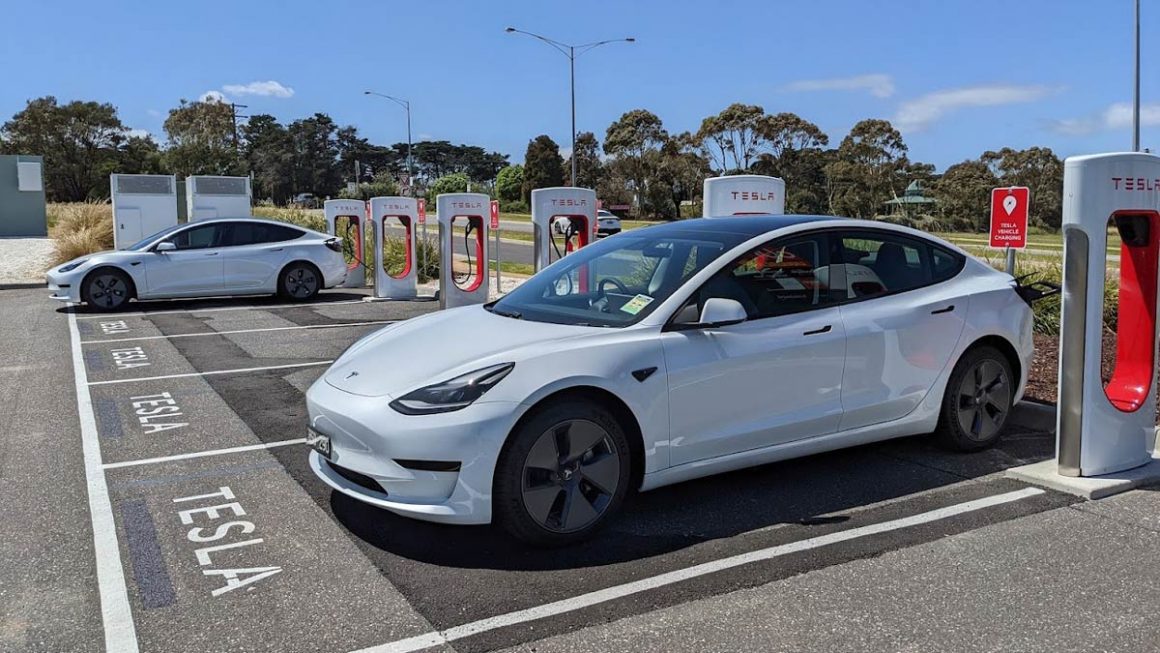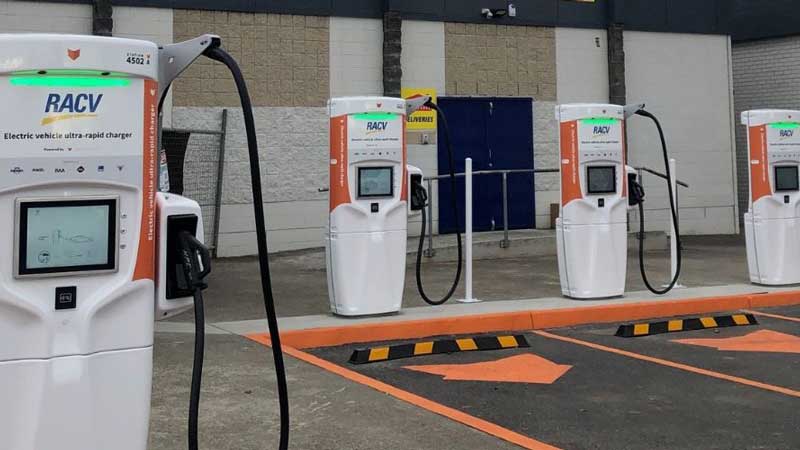There are now more electric cars than ever on the road in Australia, making availability of publicly accessible chargers critical to a smooth transition.
But the reliability of electric vehicle chargers has been called into question by EV owners who are concerned at what appears to be a high number of out of order or unavailable stations.
As The Driven reported on Thursday, EV owners who counted more than 40 chargers out of action said the issue was “beyond a joke,” with one likening taking a road trip and relying on a non-Tesla charger as “Russian roulette.”
EV charging networks tell The Driven there are a few factors that need to be taken into account, and the good news is that change is coming.
Announcements like an additional $20 million for more charging sites in NSW from the state government mean that there will be more sites. And, as more players come onto the market, more competition and ability to stockpile parts will mean a greater ability and incentive to respond faster when chargers do break down.
Understanding the various factors at play – and what to do when drivers do come across a charger that doesn’t work – can help in the meantime.
Nascent industry in time of rapid uptake
At the crux of the issue is the fact that the electric vehicle industry is still relatively young. Whereas there is a petrol station on (nearly) every corner, penetration of EV charging sites is still thin in comparison.
Additionally, most petrol stations will have anywhere from six to 12 bowsers. While owner-operated fast-charging sites generally have at least two chargers, some host-operated sites have just one. So when a charger does break down, it is far more noticeable than if a petrol bowser breaks down.
Caught in the middle of the uproar is Chargefox, an electric vehicle network and operator that manages the largest network in Australia. The network owns and operates a 22-strong network of ultra-rapid 350kW charging sites.
It also manages chargers that have been installed by site owners. All in all, Chargefox manages 250 charging locations including AC and DC fast-chargers (not including its ultra-rapid network).
Combined with a global semiconductor shortage and supply chain issues, Chargefox CEO Marty Andrews tells The Driven the current situation is “unusual.”
“It’s frustrating for us too,” he tells The Driven. “There are a small percentage that are out of order. What is unusual is for many parts there is a lead time of many weeks or months.”
Host-operated versus site-operated EV charging sites
Andrews points out that the job of maintaining host-operated sites lies with the site owner. Although Chargefox is often the first point of call when things go wrong because drivers can contact the network via the smartphone app that is used to take payment for charging.
Because it is the largest network in Australia it also gets the most attention. But Chargefox is not the only network in Australia, nor the only one with downtime. Other networks in Australia include Tesla, Evie Networks, and Jolt.
Evie Networks operates 56 fast-charging sites, ranging up to 450kW ultra-rapid chargers. It owns most of them, and operates some for ActewAGL and the Central Victorian Greenhouse Alliance’s regional Victorian sites.
Tesla owns and operates all of the DC fast-charge sites in its 48-strong Supercharger network, and only Tesla cars can charge at these sites.
Tesla also sells “Destination chargers” to hosts who can choose to lock them only to Tesla cars, or open them to all EVs (that may then need to use a plug adapter to use them, depending on age). There are around 250 Tesla destination sites in Australia, with site-specific usage set by the host.

Jolt currently operates 32 sites, and allows free 7kWh charging (about 45km) for each charging session.
Andrews says it’s also important to make the distinction between “out of order” and “unavailable” sites. For example, both the Tesla Supercharger and Chargefox chargers at Toombul in Queensland are operational but inaccessible while the shopping centre location recovers from recent floods.
Others sometimes require a remote reset, and at other times a contracted maintenance worker must visit to determine the cause of the issue.
Sometimes the issue is caused by drivers hitting the red “stop” button, which means that the next driver who comes along must contact the network operator to reset the charger.
Paul Fox, co-founder of Evie Networks, says that breakdowns are “mostly well-known faults. Sometimes users press the red button, then the next person that comes to use it will not be able to use it. There are lots of common issues, then there are rarer issues (that somtimes require parts.)”
Supply chain issues and global chip shortage
While servicing agreements may be in place to ensure uptime, parts are not always readily available.
If a part is needed to fix the site, a call is put to the charger manufacturer. Currently in Australia, the most installed fast-charger is made by Tritium, which is backed by coal and energy baron Trevor St Baker’s Energy Innovation Fund (which also backs Evie Networks).
Others are made by Swiss electrification giant ABB, and there are soon to be more players in the fast-charging market.
Fox says that “most of the networks are holding spare parts – if parts are available – but there’s definitely a short term issue in getting certain parts.”
“We’re at that stage in the industry where we are starting to have a few growing pains. We are working to bring high levels of reliability to the industry.”
His view is that it’s better for a site host to do the deal with a network rather than own it themselves. As networks grow so too will their ability to stockpile parts.
“Tritium’s job is to make great equipment and make sure we can buy spares from them, but in the end it’s not Tritium’s job to maintain the equipment.”
“If you own a shop and put a charger out the front of your shop, you won’t stock parts. If you deal with a major network they’re holding the parts for you,” he said.
Need for higher density of chargers
Andrews agrees that more competition will mean higher levels of service and technology. “All of this is positive as we move forward,” he says.
He adds that it is also important that there be larger charging sites, with greater density of plugs. Then, the industry will move towards the petrol bowser scenario wherein a break down does not matter as much.
Then, as EV uptake continues to grow, there will also be more charger availability for a larger number of EV owners.
“Eighteen months ago what mattered was coverage,” says Andrews. “But today, density matters – there is more queuing and more people waiting in line for charging stations.”

Always check charger availability ahead of a visit, and display good EV etiquette
While the industry deals with growing pains, early adopter drivers can check ahead for charger availability and uptime when planning long-distance trips in the meantime.
The Plugshare app, and network smartphone apps, are good resources for checking charger availability ahead of a trip.
Good EV etiquette also helps to reduce frustrations. Plugshare can also be used to check-in to let other EV owners know how long you’ll be there, and even leave contact details if you plan on being away from the car while charging.
It’s also good etiquette to only charge as much as you need to. Charging past 80% state of charge takes a lot longer and ties up chargers when others could be using them.

Bridie Schmidt is associate editor for The Driven, sister site of Renew Economy. She has been writing about electric vehicles since 2018, and has a keen interest in the role that zero-emissions transport has to play in sustainability. She has participated in podcasts such as Download This Show with Marc Fennell and Shirtloads of Science with Karl Kruszelnicki and is co-organiser of the Northern Rivers Electric Vehicle Forum. Bridie also owns a Tesla Model Y and has it available for hire on evee.com.au.

